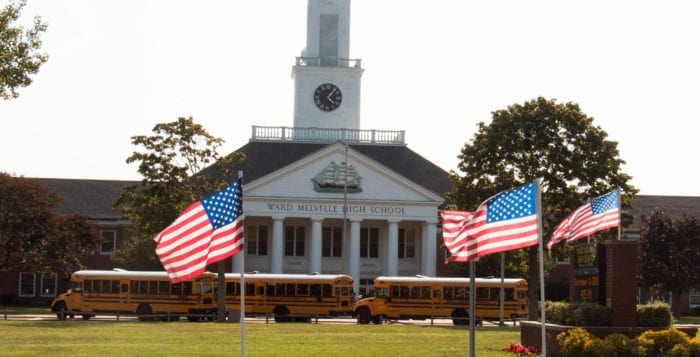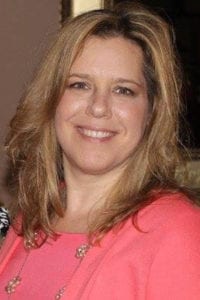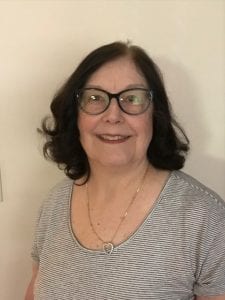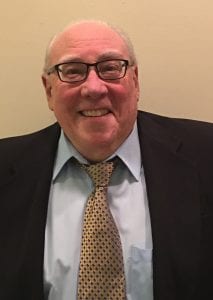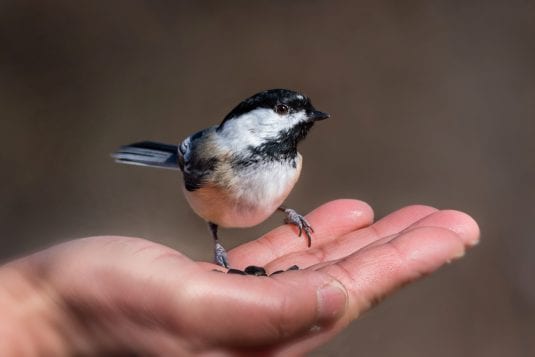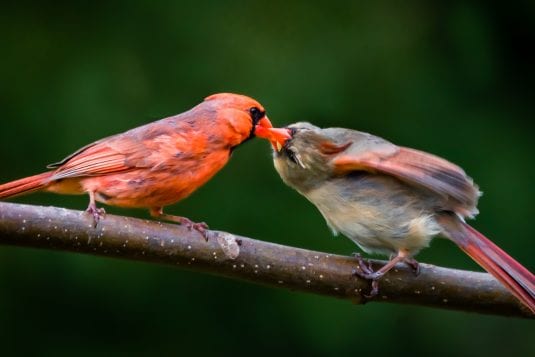By Leah Chiappino
Hauppauge High School has named Caroline Fortmeyer and Devin Capece as its valedictorian and salutatorian, respectively.
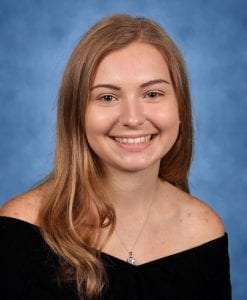
The graduates have had to finish their senior year and celebrate their achievements in the midst of a pandemic. Yet, Fortmeyer said that the situation has taught her resilience and perspective.
“Although it was very unfortunate to have my prom canceled and graduation delayed, this entire experience has transformed my life in ways that are far more important than these events,” she said. “The COVID-19 pandemic has yielded lessons of resiliency, innovation and gratitude for our entire society.”
Capece added that he chose to look at the positive aspect of having online classes, such as the fact his family grew closer together.
“We can’t change the fact that COVID-19 has forced us to distance ourselves from others and that all of the senior moments that we had been looking forward to were suddenly stripped away, but we can control whether we allow it to destroy our spirit,” he said. “I am hopeful that this crisis will display the resilience of our generation and teach us to find value and hope in a dire situation. … I am grateful that this period has provided all of us with the time to reflect upon what is truly important.”
Fortmeyer earned a final grade point average of 102.61. She is headed to Northeastern University in the fall where she will major in business. The valedictorian said that she is uncertain about what her specific career path will look like, but that she hopes to work with people in a math-oriented field. At Hauppauge, she was National Honor Society class president and was a member of the Mock Trial club and the chamber choir. The choir took her to competitions in New Jersey, Virginia and Florida and allowed her to perform at various community events. She said the choir’s trip to Disney last year as her favorite high school memory.
“It was truly an unforgettable experience,” she said.
Having lived in Hauppauge her entire life, she said the community is one of the things she will miss the most when she goes away to college.
“I am grateful to have grown up in such a supportive community,” she said. “In fact, some of my earliest memories involve attending school events with my brothers. It always amazes me how our community is so united especially during the most difficult of times, such as the current COVID-19 pandemic.”
Fortmeyer credited both the support of her family and the education she received as factors leading to her success.
“I cannot express sufficient gratitude to my parents for their tireless support and advice, which has been invaluable to me,” she said. “I thank them for their patience, love and for teaching me the most important life lessons. I would also like to thank all of my teachers, for their commitment and dedication has been so impactful. Since the day I began kindergarten, I have felt welcomed and supported by every teacher that has entered my life. I am beyond grateful to have learned from such knowledgeable teachers and people of admirable character.”
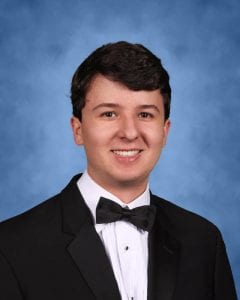
Capece finished his senior year with a 102.18 GPA. He is set to attend Purdue University to study chemical engineering. He is unsure what he would like to do as a career but is certain that he wants to use his education to help solve societal problems he is passionate about.
The salutatorian was involved in a number of honor societies, was a varsity tennis player and played the saxophone with the advanced jazz band. He was president of the ethics and debate club, secretary of the robotics team, and competed in the Model United Nations competition. He also volunteered with Vincentian Leadership Institute to go on various community service trips throughout New York City and was a Eucharistic minister and outreach volunteer at Christ the King Parish. Capece also worked with Long Island Cares to organize food drives.
Capece said his favorite high school memory was hanging out with friends and ordering pizzas late at night at the hotel during the trip to the Festivals of Music in Virginia Beach he took his sophomore year.
One of four boys, Capece credits his close-knit family for his success.
”Both my parents are the most giving people in the world, and represent love at its core,” he said. “Of course, no family is perfect, but it’s the imperfections that make it perfect. My parents have always taught us positive values, most notably selflessness and doing good for others, but have also made us aware that nothing good ever happens without hard work.”
Specifically, he thanked his mother for helping him navigate the college search. She “helped me to figure out which schools were best to apply to, and she became a database of college information,” he said. “I am truly thankful that she has put so much effort into my life, and that she enjoys doing so.”
Capece also thanked the high school band director, Andrew Monsen, and credits him for making his experience in the music department so enjoyable.

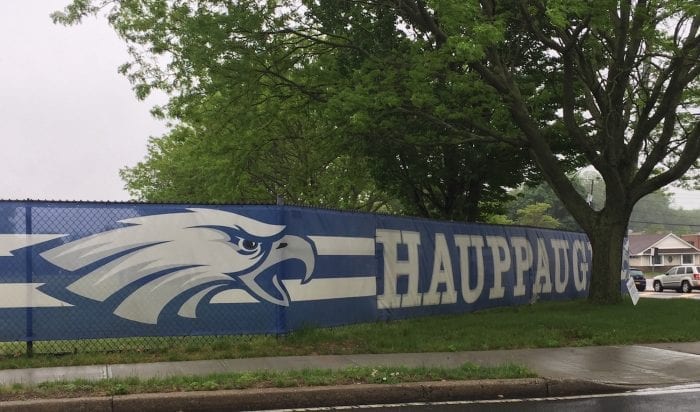
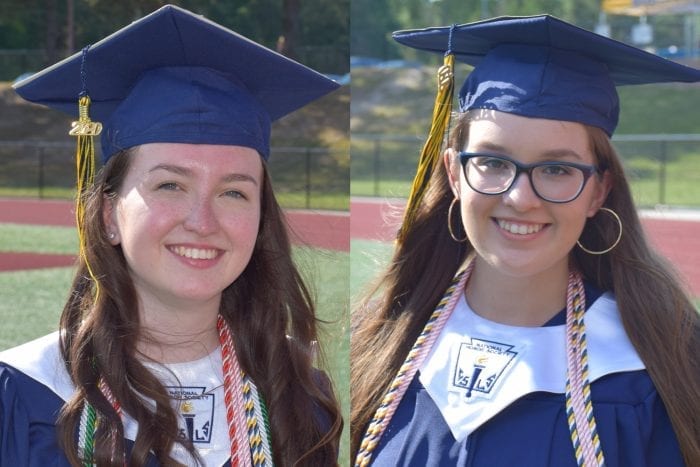
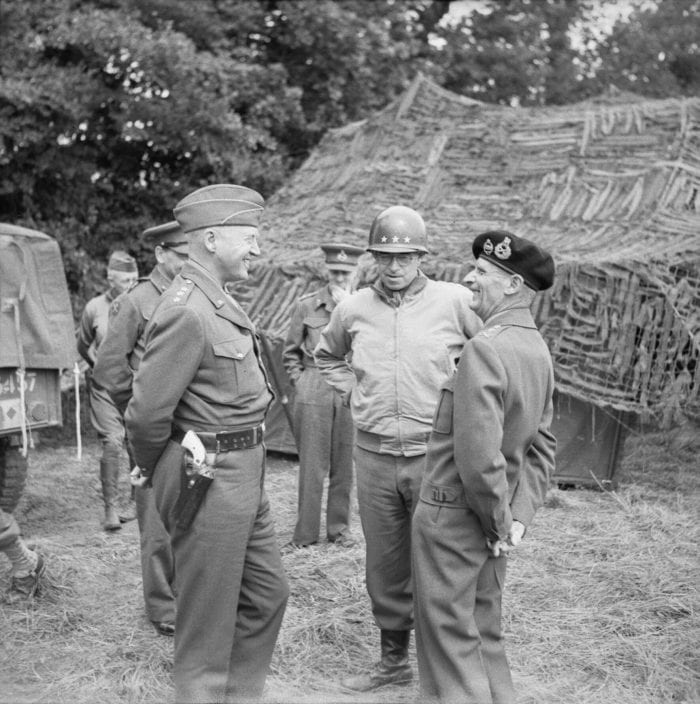



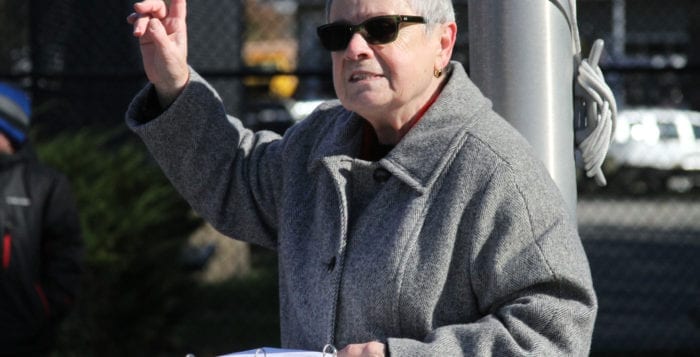
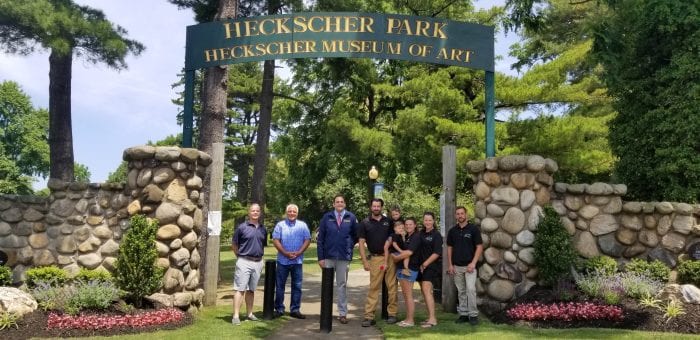
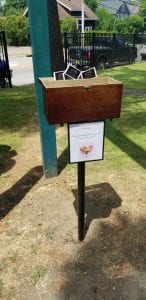 A box of complimentary wildflower seed packets was installed by the landscape company at the second installation, from which visitors to the park can take a complimentary seed packet. A second box of seed packets will be installed next to the first installation on the western Prime Avenue entrance to the park within the week.
A box of complimentary wildflower seed packets was installed by the landscape company at the second installation, from which visitors to the park can take a complimentary seed packet. A second box of seed packets will be installed next to the first installation on the western Prime Avenue entrance to the park within the week. “I am the prime beneficiary of this Adopt-a-Corner installation because my office is located across the street,” stated Councilman Smyth. “I see this beautiful corner every day. I encourage everyone to make the town look its best by adopting a corner. The resident or business which adopts a corner may put place a small plaque with their name or dedicate the corner in honor of someone.”
“I am the prime beneficiary of this Adopt-a-Corner installation because my office is located across the street,” stated Councilman Smyth. “I see this beautiful corner every day. I encourage everyone to make the town look its best by adopting a corner. The resident or business which adopts a corner may put place a small plaque with their name or dedicate the corner in honor of someone.”